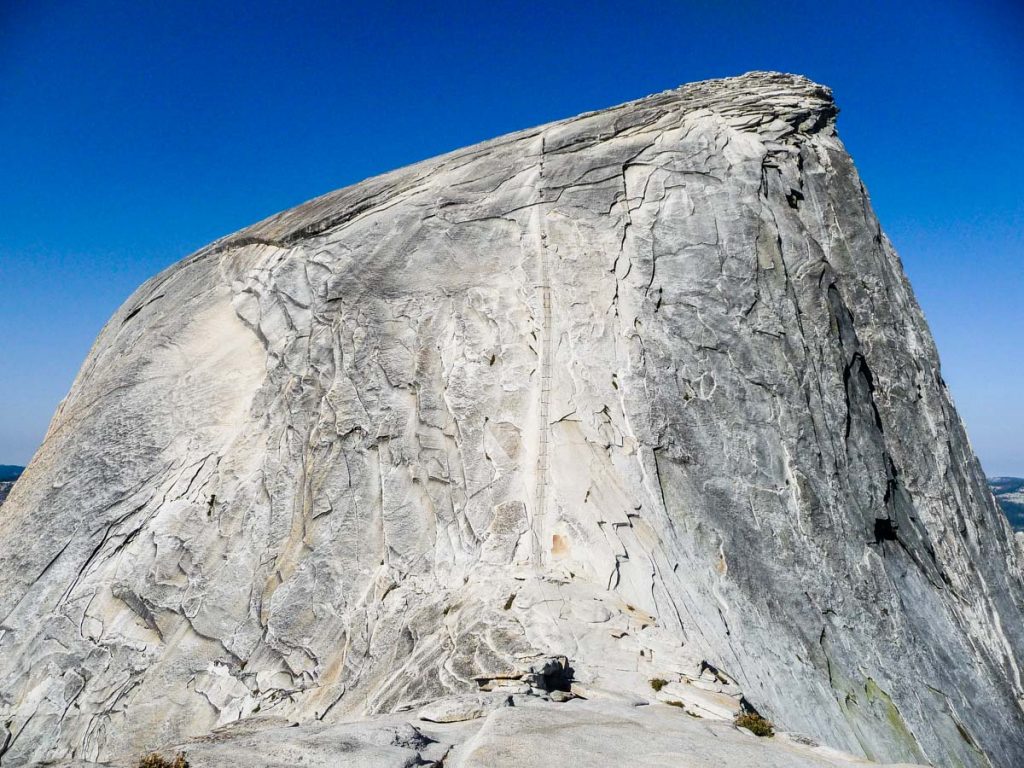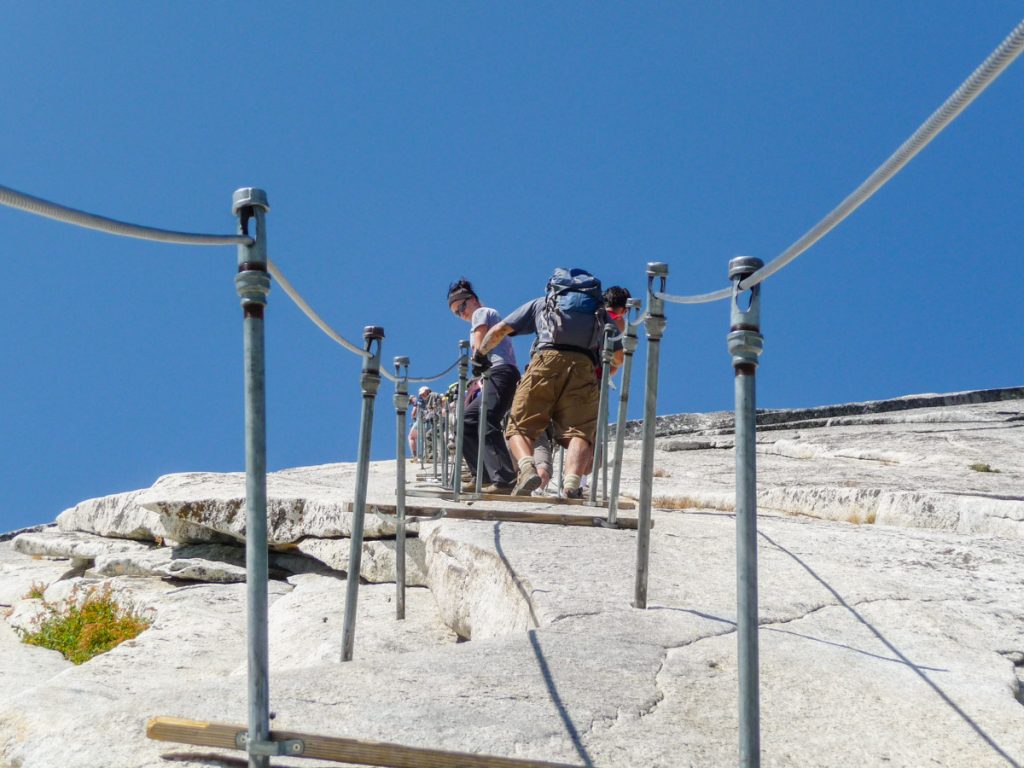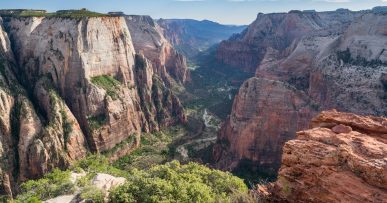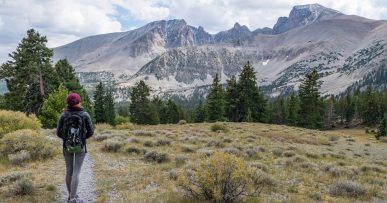
1Starting in 2010, hiking Half Dome will require a permit. You can reserve a permit up to 4 months in advance on the National Park Service website.
2 If you are not used to hiking long distances or if you are not in good shape, I’d try not do the whole hike up and down from Yosemite Valley (16 miles) in one day. Going up 5000 feet in 8 miles is pretty rough. By the time you get to the cables you might already be very tired, and after the summit you’ll still have to go down 5000 feet. Instead, I’d hike up to Little Yosemite Valley or around the Half Dome trail junction the first day, camp there, and then summit Half Dome early the next morning, before the crowds get there. This would require a wilderness permit and some advanced planning, but it’d be a more enjoyable trip.
3 There was a big pile of used gloves on the base of the cables, but I’d get some cheap gloves that fits you before the trip. I bought a pair of $3 gloves at the Home Depot. They had rubber on the inside and provided great grip on the cables.
4 Make sure you bring a lot of water, or a way to purify it on the trail. I think for a 16-mile hike you’d need about a gallon. Also, keep in mind that I didn’t find any water after Little Yosemite Valley, so if you need to purify, make sure you get plenty there.
5 Wear shoes with soles that have very good grip. The granite has been polished by the hundreds of people who step on it every day and can be a bit slippery.
6 Bring a headlamp or flashlight just in case you take longer than expected and need to hike in the dark.
7 Don’t climb the cables when there’s any possibility of a storm. Not worth risking your life and you can always do it at a later date. There have been many accidents (some deadly) in the past during storms.
8 Bring warm clothes if there’s a possibility you’ll be hiking during sunrise or sunset. Temperatures can go down quickly during sunsets.
9 Wear plenty of sunscreen and wear a hat. The sun can be pretty punishing at the summit.
10 Once on the cables, take your time, don’t rush. Don’t try to pass the people ahead of you. Be cordial to the people going in the opposite direction. If you are struggling, let the people behind pass you, but don’t feel pressure to have to go faster than you are comfortable. Always go at your own pace. On the same token, don’t rush the people ahead of you. Offer them encouragement if they are struggling.



